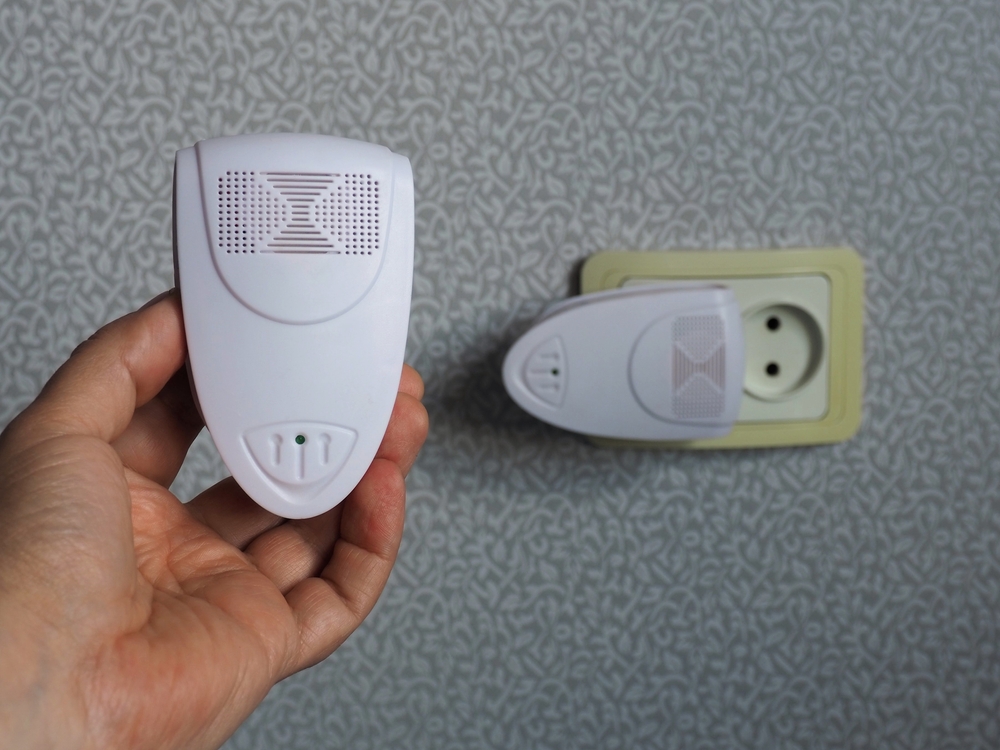
We’ve heard folks discuss ‘sounds that solely a canine can hear’, and everyone knows that our canines can hear the rustling of a chip packet from a mile away, however what are the actual information a few canine’s sense of listening to?
Though the superior mind and mind capability of people have allowed us to succeed in the lofty place of proprietor and chief, once you check out how we measure up in opposition to our canine companions in most different respects, we’re woefully outmatched. They’re much better athletes, have an nearly unparalleled sense of odor, and their sense of loyalty is much larger than our personal. Along with all this, canines may also hear a wider vary of sounds from a lot farther distances.
Let’s break this down so we are able to perceive the canine listening to vary and discover out what they will hear however we are able to’t.
Sound Frequency
Have you ever ever heard the riddle concerning the tree falling within the forest? If nobody is round to listen to it, does it actually make a sound? The reply is sure, but in addition, no.
A sound is created when one thing creates a vibration (sound waves) that strikes molecules by means of the air (or water) which can be acquired by an auditory receptor, just like the eardrum of mammals. So, if there is no such thing as a receptor, is it nonetheless a sound? We might argue this one forwards and backwards, however as an alternative, let’s discuss how sound is measured and the way canines measure as much as different animal species.
Sounds are measured in two methods:
- The frequency at which the sound waves are vibrating, often known as the pitch – ie. high-pitched or low-pitched sounds. Measured in Hertz (Hz)
- The depth of the sound, or the quantity – ie. loud or quiet. Measured in Decibels (dB)
Completely different animal species can hear sounds that fall in particular frequency ranges; some can also be capable of hear sounds at a lot decrease decibels than others. As a common rule, smaller animals are normally in a position to detect sounds at a decrease quantity than bigger animals, even when they will hear sounds of the identical frequency.
Canines and people are very related of their potential to listen to low-frequency sounds, however canines can hear frequencies as much as twice as excessive as we are able to.
The typical human listening to vary is round 64 – 23,000 Hz, and sounds with a frequency increased than 20,000 Hz (20 kHz) are known as ‘ultrasonic’ – ie. sounds which can be increased than will be readily detected by the human ear. By comparability, the sound frequencies detected by canines are round 67 – 45,000 Hz. Let’s check out how that stacks up in opposition to different animal species:
| Species: | Approximate Vary (Hz) : | Species: | Approximate Vary (Hz): |
| Human | 64-23,000 | Chinchilla | 90-22,800 |
| Canine | 67-45,000 | Bat | 2,000-110,000 |
| Cat | 45-64,000 | Beluga Whale | 1,000-123,000 |
| Cow | 23-35,000 | Elephant | 16-12,000 |
| Horse | 55-33,500 | Porpoise | 75-150,000 |
| Sheep | 100-30,000 | Goldfish | 20-3,000 |
| Rabbit | 360-42,000 | Catfish | 50-4,000 |
| Rat | 200-76,000 | Tuna | 50-1,100 |
| Mouse | 1,000-91,000 | Bullfrog | 100-3,000 |
| Gerbil | 100-60,000 | Tree Frog | 50-4,000 |
| Guinea Pig | 54-50,000 | Canary | 250-8,000 |
| Hedgehog | 250-45,000 | Parakeet | 200-8,500 |
| Raccoon | 100-40,000 | Cockatiel | 250-8,000 |
| Ferret | 16-44,000 | Owl | 200-12,000 |
| Opossum | 500-64,000 | Hen | 125-2,000 |
We people is likely to be impressed by the listening to vary of our canine buddies, but it surely’s nothing in comparison with that of the porpoise!
What Sounds Can Canines Hear That We Can’t?
So we all know that canines can hear sounds within the ultrasonic vary as much as round 45,000 Hz (45 kHz), however what does that entail?
1. Electronics and Machines
The most typical high-frequency sounds that your canine could pay attention to are those who come from equipment. Some people are extra delicate to the high-pitched sounds which can be emitted from electrical tools, and canines will probably be much more conscious of those.
Apparently, these kinds of high-frequency sounds can really be damaging to the human ear, particularly when dialed as much as excessive decibels, because the high-frequency vibrations can result in a build-up of stress throughout the ear. So it’s the sounds we can’t hear that we should be most cautious with! In actual fact, there are worldwide requirements that regulate the utmost decibels that may be emitted by ultrasonic tools.1

2. ‘Silent’ Whistles
Ultrasonic canine whistles are a well-liked coaching software as they’re much less intrusive than a decrease frequency kind, and the upper frequency sound is ready to journey a lot additional distances, typically over a mile.
The time period ‘silent’ whistle is a bit deceptive, as they have a tendency to emit a sound that’s simply on the higher fringe of the human listening to vary, so some folks can hear them higher than others.
3. Ultrasonic Pest Repellers
These small units emit sounds at a frequency of round 15 to 75 kHz, with most units permitting you to pick out the frequency vary. Whereas canines can technically hear these sounds, the pest-repelling units are designed to work at decrease decibel ranges that may be detected by smaller animals like rats, mice, and bugs, however aren’t loud sufficient to trouble family pets. Nevertheless, in case you have any unique animals like rodents, reptiles, bugs, or arachnids, you would possibly need to suppose twice earlier than utilizing considered one of these units!

4. Quiet Sounds
Smaller animals are in a position to hear sounds at decrease decibels than we are able to, which is why kids can typically hear quiet noises higher than adults, and canines can hear the fridge opening from upstairs or your automobile coming down the street.
5. Distant Sounds
The upper the sound frequency, the larger the gap that sound can journey, which is why canines may also detect sounds extra clearly from farther away than we are able to.

What Offers Canines Their Superior Listening to?
There are a selection of options of the canine ear that make them in a position to hear sounds at increased frequencies than people:
- The deeper ear canal of the canine enhances its potential to direct sound waves towards the eardrum.
- The cartilaginous pinnae (ear flaps) are in a position to transfer independently of each other to assist find and direct sound waves into the ear canal. Even canines with floppy ears have and use this potential, however canines with upright ears do have one thing of a bonus.
- The anatomy of the canine inside ear seems to be higher geared to sound magnification than in people.
Listening to Issues in Canines
Similar to in people, canines typically endure from listening to discount and loss as they age. That is principally because of the gradual degeneration of particular cells throughout the ear, the nerves within the mind that carry and interpret sounds, and the thickening of the tubes and inside constructions throughout the center and inside ear. This tends to be gradual, and we are able to take steps to make sure that we’re nonetheless in a position to talk successfully with a dog with hearing loss.
Certain breeds, together with the Australian Shepherd, Dalmatian, Bull Terrier, and Jack Russell Terrier, are identified to be predisposed to congenital deafness, and that is one thing that accountable breeders (and house owners) must be testing for.
Canines may also suffer hearing loss on account of trauma, an infection, wax build-up, and at the same time as a aspect impact of sure medicines.
An excessive amount of of an excellent factor?
Whereas enhanced listening to is usually a bonus, for some people, it may be a curse. Many canines that endure from anxiousness associated to fireworks or thunder are doubtless to take action as a result of these sounds have an adversarial impact on them. The power to detect sounds that we are able to’t may also imply that canines will be affected by sound air pollution that we aren’t conscious of.
I’ve identified a number of canines that have been extremely confused and consistently on edge, to the purpose of needing medicine and infrequently going open air, whose indicators of hysteria stopped after they grew to become acutely deaf, suggesting that their behavioral points have been symptomatic of a listening to drawback!
Sounds You Can Play For Your Canine
This video has ultrasonic frequencies you could check out at dwelling to gauge your canine’s response. Simply be certain to not play it too loud – you don’t need to harm your individual ears, and it doesn’t should be very loud for them to listen to the sounds. In case your canine appears distressed, flip it off instantly.
Remaining Ideas
The canine potential to detect high-frequency sounds is much larger than our personal. This potential little question developed of their ancestor to assist them turn out to be more adept hunters, in addition to enable them to remain in touch over nice distances. For our pets, this heightened listening to isn’t employed for looking functions, but it surely little question permits them to maintain tabs on who and what’s of their neighborhood, and most significantly, when somebody is opening a meals bag.
With the quantity of sound air pollution from digital units within the dwelling, in addition to sirens and equipment, our canines could generally really feel overwhelmed, which is one thing we must be aware of. Their superior listening to developed in open plains and quiet forests, so our noisy world could also be quite a bit for some canines to deal with.
In case you are anxious about your canine’s ears or listening to, you’ll want to converse to your vet, even should you suppose it’s in all probability simply on account of their age.
Featured Picture Credit score: Anze Furlan, Shutterstock
Trending Merchandise















